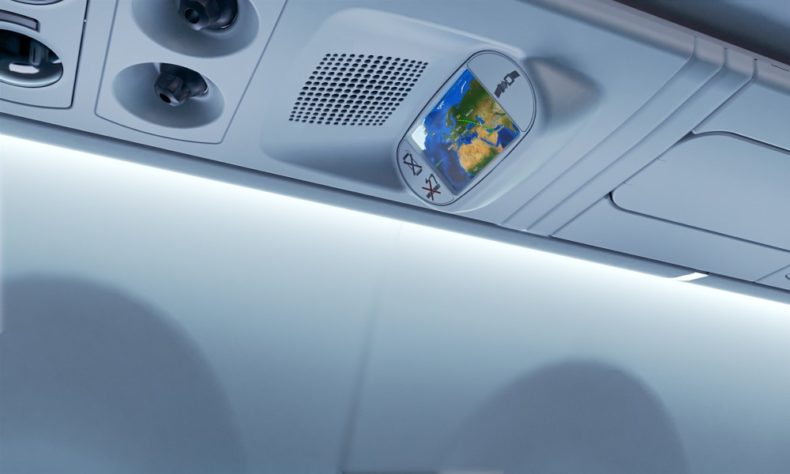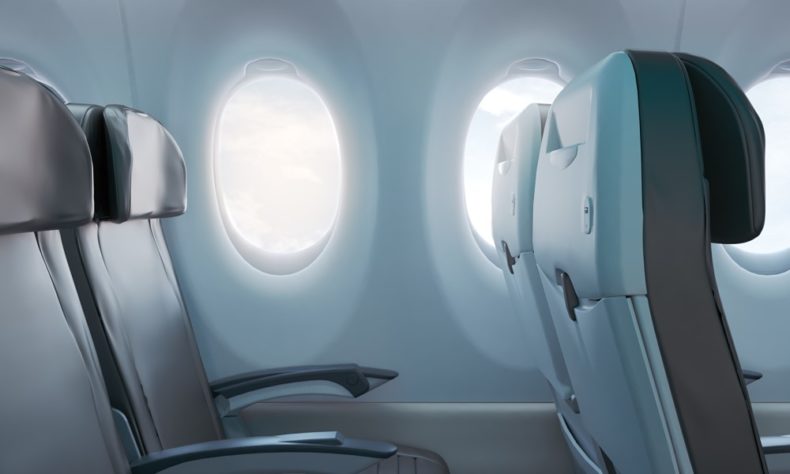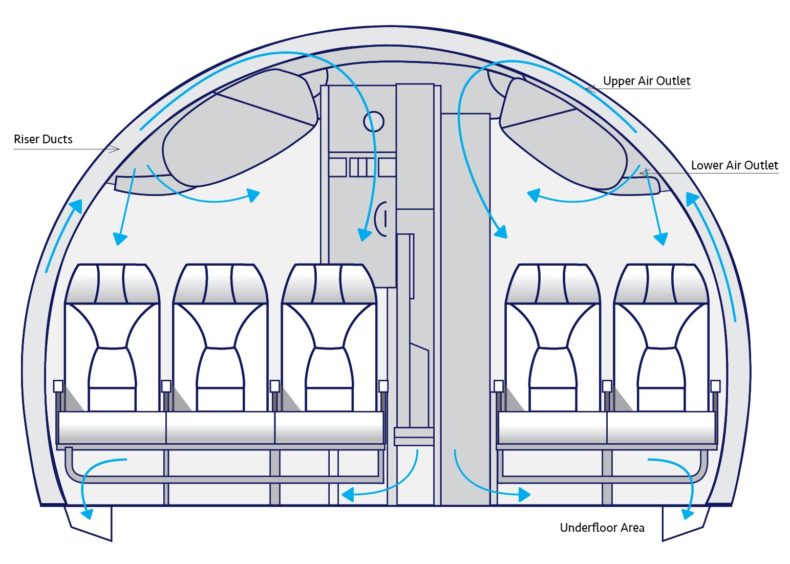According to a recent survey by the International Air Transport Association (IATA), 37% of passengers are concerned about breathing the air on an airplane. Because there is a lack of knowledge about how air is filtered and supplied in aircraft, most consider it a threat. But with its modern environmental control system, airBaltic has set a high standard for minimising the potential of spreading viruses.
Cutting-edge technologies
The Airbus A220-300 fleet is equipped with cutting-edge technologies, making flying as worry-free as possible. For the production of Airbus A220-300 aircraft, the manufacturer has used a cabin air recirculation system and High Efficiency Particulate Air (HEPA) filters that provide better performance compared to those used in any other type of public transportation.

Constant fresh air supply
Cabin air is continuously replenished with fresh air from the moment the aircraft engines or auxiliary power unit is turned on. The air is collected from outside the aircraft through the engine. For your comfort and wellbeing, it is mixed with filtered air from the cabin. The ratio between filtered air and fresh air from outside is 25:75, which sets a high benchmark among jetliners used by other carriers across Europe. The fresh air is taken from the engine compressor and passed through the air cycle machine at a temperature well above 100ºC to ensure aseptic air quality.

HEPA filters eliminate pathogens
The rest of the cabin air consists of the HEPA-filtered and recirculated cabin air. The HEPA filters are very effective at trapping microscopic particles as small as bacteria and viruses when the air passes through the system. In such conditions, airborne pathogens from the cabin air are captured and eliminated with 99.99% efficiency, making our aircraft cabin air exceptionally clean.
Minimal air transmission among passengers
Inside the passenger cabin, the airflow is supplied from above the overhead compartment and flows directed towards the floor, eliminating airflow along the cabin and minimising lateral air transmission among passenger rows. According to IATA, the air circulation in planes is many times better than in classrooms, supermarkets, conference rooms, and offices. In fact, the risk associated with viruses on jets is probably lower than in any other confined space thanks to next-generation cabin air filtration systems equipped with HEPA filters.

In addition to the modern environmental control system, other preliminary steps also help to ensure a safe environment inside airBaltic aircraft. ‘We are taking care to keep our passengers and aircraft safe while travelling. The airline has introduced measures following the recommendations of the local government and healthcare agencies, the aircraft manufacturer, and IATA,’ says Lauris Miķelsons, VP Compliance and Safety at airBaltic.
‘airBaltic is doing its utmost, and the team comes together to ensure safe flights for travellers and the crew,’ concludes Miķelsons.